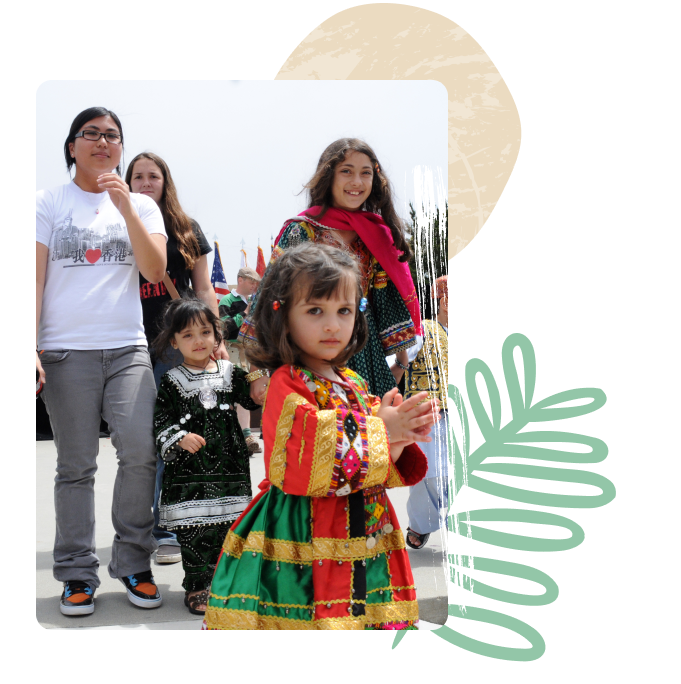But nearly half of all languages are at risk of being silenced.

Language is a stream of voices, which the living must keep flowing. If this stream dries out, the voices of generations and generations of people go silent.
People around the world are working hard to reclaim, revitalize, document, and promote at-risk languages. The Endangered Languages Project’s mission is to support them in their critical work, and help turn the tide of language loss.

Endangered languages are not "doomed" - they can be revitalized. People and communities around the world are revitalizing their languages. Visit the Revitalization Directory to learn more about these programs. There are many different ways that language revitalization can happen. To learn and think more about these possibilities, visit the Learning & Help Center.
This work is about more than language. The forces that cause languages to become endangered are things that everyone should be concerned about. Everyone can work to change the root causes of language endangerment. Learn more about supporting language revitalization as an ally.
The term “endangered languages” is complicated. It’s a word that has been widely used in this field for several decades, and it’s familiar to audiences in many parts of the world. It’s a term that is meaningful to governments, institutions, NGOs, and funding agencies – some policies, laws, or grants are specifically for “endangered” languages. It’s also a term with lots of baggage. There are many complex and valid reasons that some people and communities do not like the term “endangered” to be used for their languages, such as its focus on extinction, its reliance on biological metaphors of language, or its failure to name the root causes of language loss, among other reasons. Other people and communities choose to describe their languages as “endangered,” and find the word useful. It’s a word that carries multiple meanings, and we acknowledge that it may be an uncomfortable or inappropriate term in some contexts.
ELP prioritizes using more nuanced and more appropriate language whenever we can, but sometimes we will also use popular terminology to be accessible and understandable to the public.
There are many ways to measure and understand how endangered a language is. ELP uses the Language Endangerment Index (LEI), which was developed by the University of Hawaiʻi at Mānoa Department of Linguistics, as part of the Catalogue of Endangered Languages. The LEI considers four factors in measuring language endangerment: 1) the number of people who speak or sign a language fluently; 2) whether the number of speakers or signers is growing, stable, or shrinking; 3) whether the language is being learned by younger generations (intergenerational transmission); and 4) what areas of life (domains of use) the language is used in. Read more about the LEI here.
A dormant language is a language that does not have any living fluent speakers/signers. Languages that are not used are sometimes called “dead” or “extinct” (for example, in popular media or academia) but ELP does not use these terms for many reasons - learn more here. “Dormant” represents a sleeping state. When a language is sleeping, it can be awakened through revitalization.
It's important to note that any count of endangered languages is just an estimate. This estimate is based on the information that is available to academic researchers, like ELP's Catalogue of Endangered Languages team at the University of Hawaiʻi at Mānoa. There are likely languages that academic researchers don't know about, and those are not included in this count. And even counting how many languages exist is difficult and complicated.
Our best estimate of how many endangered languages there are is gathered from academic research and publications, communications with people in language communities, government censuses, community surveys, and other trustworthy sources. Learn more about our research here.
Language is much more than just a collection of words or a tool for communication: languages reflect all our different ways of being human. Indigenous languages, in particular, carry irreplaceable knowledge systems and cultural practices that are critical to their communities’ ways of knowing and being, worlds and worldviews. Language is at the heart of identity and culture.
Language endangerment is also about injustice. Language endangerment reflects violations of human rights, disruptions to lives and communities, and the destruction of knowledge and cultures. Put simply: the things that cause language endangerment make the world worse for everyone.
Particularly for Indigenous Peoples, language revitalization is about connections: (re)establishing and renewing intergenerational relationships to lands, ancestors, human and beyond-human relatives, lifeways, worldviews, and social, cultural, and spiritual ways of knowing and being.
Language revitalization supports wellness: it’s linked to better mental, physical, and emotional health in Indigenous, endangered, and minoritized language communities. Language revitalization upholds human rights and the self-determination of Indigenous Peoples, as affirmed in the UN Declaration on the Rights of Indigenous Peoples.
Sustaining language diversity means sustaining a world with a greater diversity of knowledge, ways of living sustainably, and understandings of what it means to be human. A better world for languages is a better world for all.
Find out how you can get involved, contribute to the ELP community, and support language revitalization worldwide. We’re stronger when we work together.
Your gift will help the world’s endangered languages not only survive, but thrive.
Find how-to guides, tutorials, and learning materials for different areas of language revitalization - whatever stage you’re in.